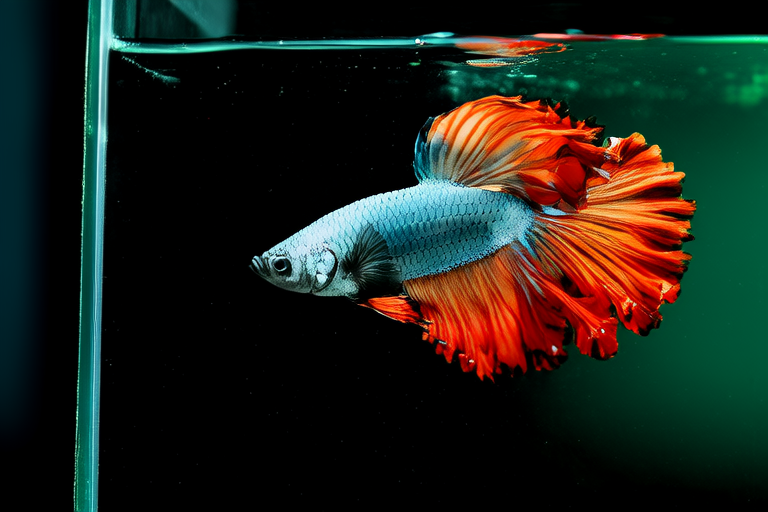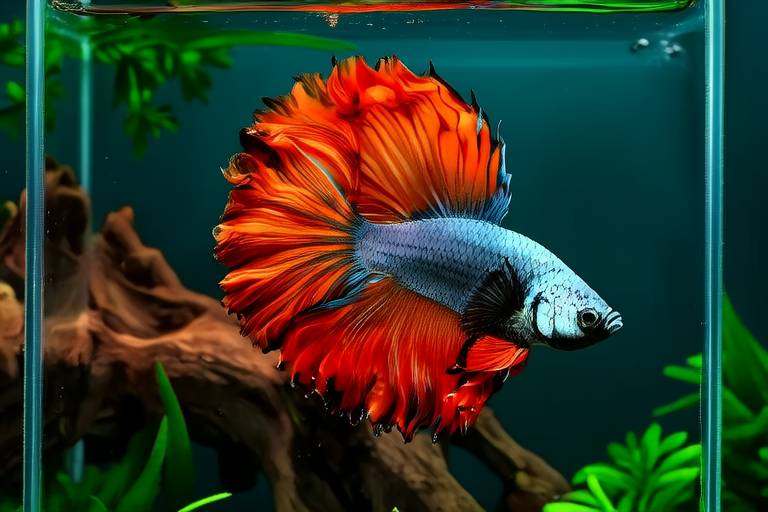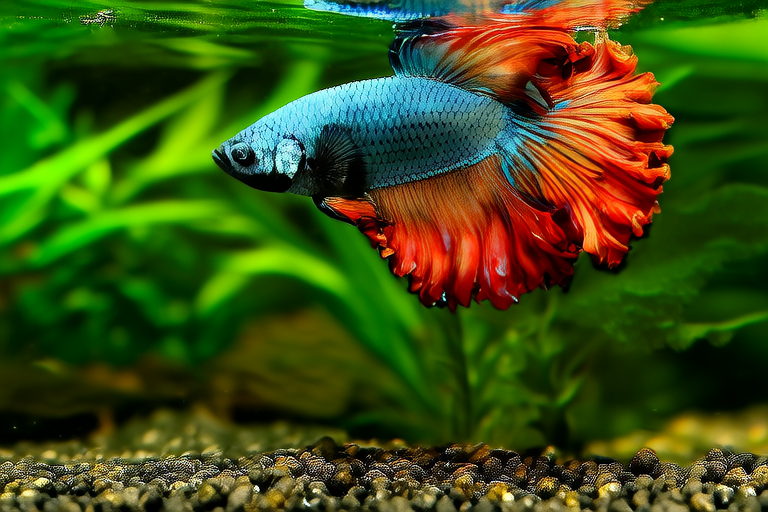
How to Create the Perfect Habitat for Your Betta
Welcome to your comprehensive guide on how to create the perfect habitat for your Betta. This guide covers all aspects of Betta care, from tank size recommendations to dietary tips, ensuring you provide your Betta with a healthy and long-lasting environment.
Tank Size Recommendations
The first step in creating the perfect habitat for your Betta is choosing an appropriate tank size. Many people mistakenly believe that Bettas can thrive in small containers like vases or bowls. However, this is far from true. A minimum tank size of 2.5 gallons (10 liters) is recommended to provide enough space for your Betta to swim comfortably. Larger tanks, up to 5 gallons (20 liters), are even better as they offer more room and make it easier to maintain water quality.
When selecting a tank, consider its shape. Tall, narrow tanks are often recommended for Bettas because they allow the fish to swim vertically, which is natural behavior for them. Additionally, these tanks tend to have less surface area, which can help reduce evaporation and keep the water level stable.
Appropriate Water Conditions
Temperature
Maintaining the right temperature is crucial for your Betta’s health. The ideal temperature range for Betta fish is between 76°F and 82°F (24°C to 28°C). Temperatures outside this range can stress your Betta and weaken its immune system, making it more susceptible to diseases. Use a reliable aquarium heater to maintain a consistent temperature and a thermometer to monitor it regularly.
pH Level
Bettas prefer slightly acidic to neutral water, with a pH level between 6.5 and 7.5. Avoid extreme pH levels, as they can be harmful to your Betta. If your tap water has a pH outside this range, consider using a water conditioner specifically designed for Bettas to adjust the pH to the desired level. Regularly test the water to ensure the pH remains within the optimal range.
Suitable Decorations and Hiding Spots
Providing hiding spots and decorations in your Betta’s tank is essential for its comfort and mental well-being. Bettas are naturally territorial and may become stressed if they feel exposed. Plants, caves, and floating structures can serve as hiding spots and create a more natural environment. Live or artificial plants are excellent choices, as they provide both shelter and aesthetic appeal. Ensure any decorations are safe for aquatic use and free from sharp edges that could harm your Betta.
Plants also play a role in maintaining water quality by absorbing excess nutrients and producing oxygen through photosynthesis. Choose hardy, low-maintenance plants like Java ferns, Amazon swords, or Anubias varieties that can thrive in Betta tanks. Floating plants, such as duckweed or water sprite, can also be beneficial as they provide additional cover and help control algae growth.
Filtration and Aeration Systems
Proper filtration and aeration are vital for maintaining water quality and providing adequate oxygenation. Bettas require well-oxygenated water, and while they can breathe air from the surface, they still benefit from dissolved oxygen in the water. A filter helps remove waste, uneaten food, and other debris that can contribute to poor water quality. Choose a filter that matches the tank size and provides gentle circulation without creating strong currents that could stress your Betta.
Aeration systems, such as air stones or powerheads, can further enhance oxygenation and improve water movement. Gentle bubbles or currents help distribute oxygen throughout the tank and prevent stagnant areas where harmful bacteria can grow. However, avoid overly powerful setups that could cause excessive water movement or disrupt your Betta’s swimming patterns.
Lighting Requirements
While Bettas do not have specific lighting requirements, proper lighting can enhance their colors and promote plant growth in planted tanks. Use fluorescent or LED lights that provide full-spectrum light, simulating natural daylight. Aim for approximately 8 to 12 hours of light per day, mimicking the natural day-night cycle. Avoid leaving the lights on for extended periods, as this can lead to algae growth and stress your Betta.
If you have live plants in your tank, ensure the lighting duration and intensity are appropriate for their needs. Some plants may require longer or shorter photoperiods, so research the specific requirements of the plants you choose. Additionally, consider using timers to automate the lighting schedule, ensuring consistency and reducing the risk of forgetting to turn off the lights.
Dietary Tips
Bettas are carnivorous and require a balanced diet rich in protein to thrive. In the wild, they feed on insects, insect larvae, and small crustaceans. In captivity, you can provide a variety of high-quality Betta pellets, flakes, and freeze-dried or frozen foods. Offer a mix of different foods to ensure a well-rounded diet and prevent nutritional deficiencies. Feed your Betta twice daily, offering only what it can consume within a few minutes to prevent overfeeding.
Some popular Betta food options include:
- High-protein pellets or flakes specifically formulated for Bettas
- Freeze-dried bloodworms, brine shrimp, or daphnia
- Frozen or freeze-dried mosquito larvae
- Live blackworms or daphnia (if available)
Rotate different food types to provide variety and stimulate your Betta’s appetite. Over time, you may notice preferences for certain foods, but try to stick to a balanced diet. Avoid feeding your Betta human food or processed snacks, as these can be harmful and lead to health issues.
Maintaining Water Quality
Maintaining optimal water quality is crucial for your Betta’s health and longevity. Regular water changes and monitoring key parameters are essential for preventing ammonia, nitrite, and nitrate buildup, which can be toxic to your Betta. Perform partial water changes every one to two weeks, replacing about 20% to 30% of the tank water. More frequent or larger changes may be necessary depending on the number of fish and the tank’s bio-load.
Use a gravel vacuum during water changes to remove waste and uneaten food from the substrate. Test the water regularly using test kits for pH, ammonia, nitrite, and nitrate levels. Keep ammonia and nitrite at 0 ppm and nitrate below 20 ppm to ensure a healthy environment. Additionally, monitor water hardness and temperature to ensure they remain within the optimal range.
Regular Tank Maintenance
Regular tank maintenance is vital for keeping your Betta’s habitat clean and healthy. In addition to water changes, perform routine tasks such as cleaning the filter, inspecting equipment, and checking for signs of disease or stress. Clean the filter media monthly, rinsing it in old tank water to preserve beneficial bacteria. Inspect heaters, pumps, and other equipment for malfunctions or wear and tear. Address any issues promptly to prevent disruptions in water quality.
Monitor your Betta’s behavior and appearance for signs of stress or illness. Healthy Bettas are active, colorful, and display vibrant fins. Signs of stress or illness may include lethargy, loss of color, fin damage, or unusual swimming patterns. If you notice any concerning symptoms, consult with a veterinarian specializing in fish or seek advice from experienced hobbyists. Early intervention can prevent minor issues from becoming serious problems.
In conclusion, creating the perfect habitat for your Betta requires attention to detail and commitment to regular maintenance. By providing an appropriately sized tank, maintaining ideal water conditions, offering suitable decorations and hiding spots, installing proper filtration and aeration systems, and ensuring a balanced diet, you can create a thriving environment for your Betta. With proper care, your Betta will live a long, healthy, and happy life.






